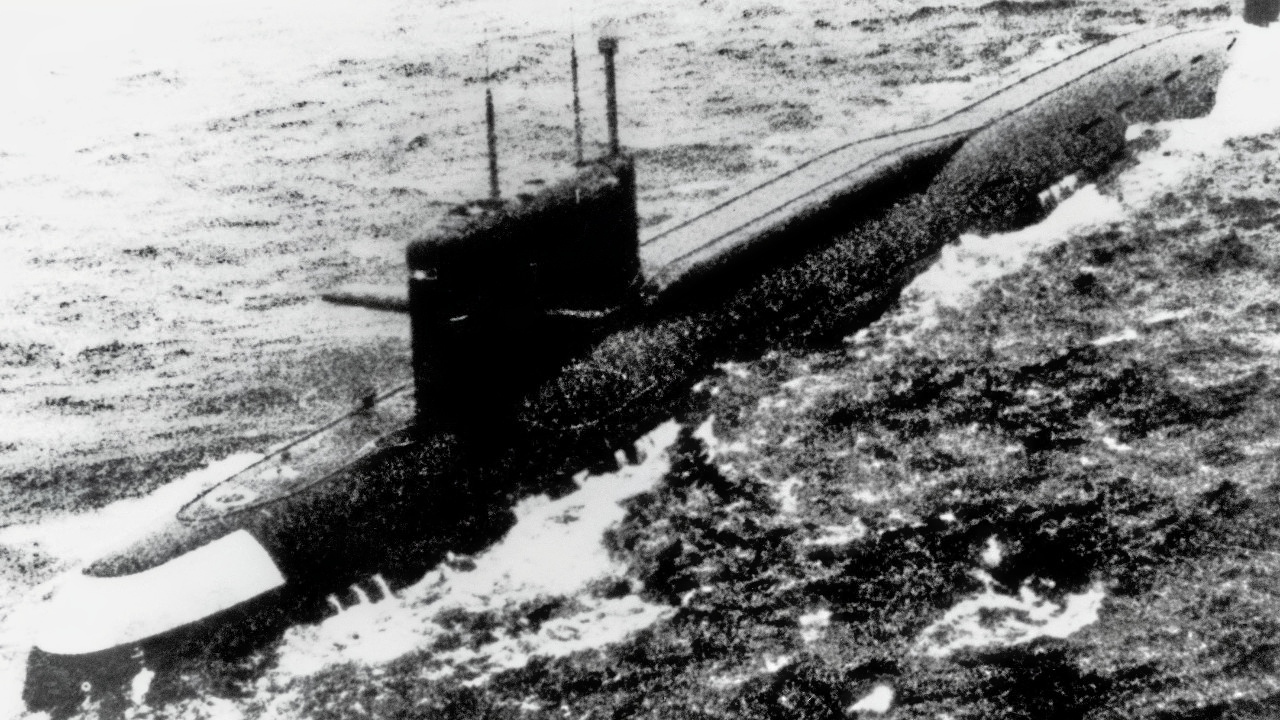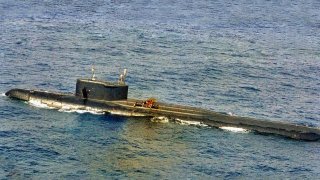Yankee-Class: The CIA Tried to Recover 1 Of Russia's Sunken Missile Submarines
The Yankee-class submarines were the first Soviet nuclear-powered ballistic missile subs capable of launching thermonuclear weapons, designed to rival the West’s Polaris submarines. Armed with 16 SLBMs, the Yankees played a critical role in the Soviet Union's nuclear deterrence strategy from the late 1960s until 1995.
What You Need to Know: The Yankee-class submarines were the first Soviet nuclear-powered ballistic missile subs capable of launching thermonuclear weapons, designed to rival the West’s Polaris submarines. Armed with 16 SLBMs, the Yankees played a critical role in the Soviet Union's nuclear deterrence strategy from the late 1960s until 1995.

-Despite their importance, the class is best remembered for the sinking of the K-219 in 1986. The submarine suffered a missile tube failure, leading to an explosion caused by seawater mixing with missile fuel.
-While the sub surfaced, attempts to tow it failed, and K-219 sank with its nuclear weapons, becoming a symbol of Soviet submarine design and training deficiencies.
Yankee-Class K-219 Disaster: A Tragic Chapter in Soviet Submarine History
The Soviet Yankee class was a nuclear-powered ballistic missile submarine built in the 1960s. While 34 Yankees were eventually built, the class is best remembered for unit K-219, which was lost at sea with a complement of nuclear weapons.
Introducing the Yankee-Class
The Yankee was the first class of Soviet ballistic missile submarines to feature thermonuclear firepower, offering a counterpoint to the West’s Polaris submarines. The Yankee was also quieter than the Soviets’ preceding Hotel class, thanks to better streamlining and improved underwater performance.
The Yankee was armed with 16 submarine-launched ballistic missiles (SLBMs), each with multiple nuclear warheads. A reliable contributor to Soviet nuclear deterrence, the Yankee carried missiles with ranges of 1,500 to 2,900 nautical miles.
The Yankee also armed four 533mm torpedo tubes for fourteen Type 53 torpedoes or mines, as well as two 400mm torpedo tubes for four Type 40 torpedoes.
Characteristics of the Yankee-Class
Serving from 1967 to 1995, the Yankee was a staple of the Soviet and early Russian navies. The sub measured 433 feet long, with a 38-foot beam and 26-foot draught. She displaced 9,300 tons when submerged.
Operating on nuclear power, the Yankee relied on two pressurized water-cooled reactors powering four steam turbines, which drove two shafts. This provided unlimited range and a top speed of 27 knots when submerged.
The hull was constructed from low magnetic steel and featured 10 compartments.
Despite being a backbone of the Soviet and Russian navies, the Yankee is best remembered for the sinking of the K-219, the only Yankee-class vessel ever lost.
The sinking of the K-219
“The disastrous sinking of the submarine K-219 on Oct. 6, 1986, stands as a testimony to the poor training, design, and maintenance of Soviet submarines,” John Rossomando wrote for The National Interest.
Indeed, the K-219 disaster was avoidable.
“Construction deficiencies, plus imperfect crew rescue equipment, plus the startling slowness and inertia of the naval agencies in introducing new ideas – such, in my opinion, is the alarming formula of the recent emergencies and tragedies,” wrote Captain Ilya B. Kolton in 1989, in reference to the Soviet submarine force generally, and the K-219 specifically.
What really happened to the K-219 is not clear. The Soviets claimed that the sub collided with the USS Augusta, a Los Angeles-class submarine. But the U.S. Navy denies the Soviet claim.
What we do know is that the K-219 was on patrol near Bermuda when a seal failure in one of her missile tubes failed, allowing seawater to mix with oxidizer in one of the liquid-fueled R-27U SLBMs. The mixture of seawater with dinitrogen tetroxide created a nitric acid byproduct. The nitric acid mixed with the fuel and created a significant explosion, which ejected the R-27U missile. The K-219 sank to 800 feet before the tanks were blown and the ship surfaced. A Soviet merchant vessel arrived and attempted to tow the K-219 – but the tow line snapped, and the submarine was lost.
The CIA attempted to recover the submarine without success.
About the Author: Harrison Kass
Harrison Kass is a defense and national security writer with over 1,000 total pieces on issues involving global affairs. An attorney, pilot, guitarist, and minor pro hockey player, Harrison joined the US Air Force as a Pilot Trainee but was medically discharged. Harrison holds a BA from Lake Forest College, a JD from the University of Oregon, and an MA from New York University. Harrison listens to Dokken.
Image Credit: Creative Commons.


